"I suggest ... the term Genetics, which sufficiently indicates that our labours are devoted to the elucidation of the phenomena of heredity and variation."
(William Bateson : Address to the Third Conference on Hybridisation, 1906)
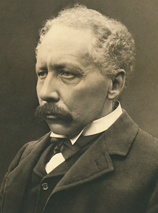 William Bateson was, at the time this was written, Steward of St. John's College. He was well placed to take advantage of the rediscovery of Mendel's work in 1901. Seven years previously he had published his classic study of variation in animals ('Materials for the Study of Variation') and, by 1899/1900 at least, was offering undergraduate lectures "on the practical study of evolution". Following the rediscovery Bateson was an enthusiastic geneticist. Together with an equally enthusiastic band of colleagues, he began genetical experiments on a wide variety of animals and plants, discovering (with Punnett) linkage in 1906. In 1908, Bateson was elected to be Professor of Biology, a chair anonymously endowed for five years for "the promotion of enquiries into the physiology of heredity and variation". Bateson left Cambridge, to be Director of the John Innes Institute, in 1910.
William Bateson was, at the time this was written, Steward of St. John's College. He was well placed to take advantage of the rediscovery of Mendel's work in 1901. Seven years previously he had published his classic study of variation in animals ('Materials for the Study of Variation') and, by 1899/1900 at least, was offering undergraduate lectures "on the practical study of evolution". Following the rediscovery Bateson was an enthusiastic geneticist. Together with an equally enthusiastic band of colleagues, he began genetical experiments on a wide variety of animals and plants, discovering (with Punnett) linkage in 1906. In 1908, Bateson was elected to be Professor of Biology, a chair anonymously endowed for five years for "the promotion of enquiries into the physiology of heredity and variation". Bateson left Cambridge, to be Director of the John Innes Institute, in 1910.
In 1912, Lord Esher endowed a permanent Chair in Genetics for "the experimental study of heredity and of development by descent". The money (£20,000) was, according to Lord Esher, "placed in my hands" by an anonymous benefactor (said to be Mr William Watson by Cock and Forsdyke in 'Treasure your exceptions: The science and life of William Bateson'), and the chair was to be called the Balfour Professorship of Genetics, (Esher to the Vice Chancellor, 7 March 1912). Later, the name was changed to the Arthur Balfour Professorship, and a condition of the endowment was that the first occupant be "appointed jointly by the Prime Minister (i.e. H.H. Asquith) and Mr. Balfour". Whittingehame Lodge, on Storey's Way, purchased jointly by Lord Esher and A.J. Balfour from the Trustees of Storey's Charity in October 1912, was given to the University in January 1914, for the residence of the professor. This is believed to be the first permanent Chair ever to be established for genetics.
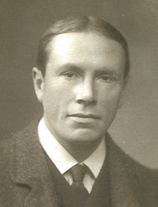 Reginald Crundall Punnett was appointed Balfour Professor in November 1912 (he was previously Superintendent of the Museum of Zoology) and in 1914 he took up residence in Whittingehame Lodge. He purchased some of the adjoining land for his private use (particularly to satisfy Mrs. Punnett's passion for tennis). A "Genetics Institute Maintenance Fund" was established by the University in 1914 (with £1,503), in part to repay Punnett the money he had spent from his own pocket in establishing the Department. It would be an exaggeration to say that genetics flourished in Cambridge under Punnett. True, some very useful work was done (particularly with fowl), but the study of genetics during the twenties and thirties fell far behind that of the major European and American centres. Punnett's main contribution (other than the Punnett Square and stimulating the Trinity mathematician G.H. Hardy to formulate what is now known as the Hardy-Weinberg principle) was the development of sex-linked plumage characters in chicken which allowed them to be sexed (and hence the females retained for egg production). He also (in 1905) published a very successful book on Mendelism, the first such text to be published. In 1911 Bateson and Punnett launched the Journal of Genetics, which Punnett edited until 1946, when he handed it over to J.B.S.Haldane. Punnett's (and Bateson's) extensive experimental notebooks are held in the University Library Manuscripts Department.
Reginald Crundall Punnett was appointed Balfour Professor in November 1912 (he was previously Superintendent of the Museum of Zoology) and in 1914 he took up residence in Whittingehame Lodge. He purchased some of the adjoining land for his private use (particularly to satisfy Mrs. Punnett's passion for tennis). A "Genetics Institute Maintenance Fund" was established by the University in 1914 (with £1,503), in part to repay Punnett the money he had spent from his own pocket in establishing the Department. It would be an exaggeration to say that genetics flourished in Cambridge under Punnett. True, some very useful work was done (particularly with fowl), but the study of genetics during the twenties and thirties fell far behind that of the major European and American centres. Punnett's main contribution (other than the Punnett Square and stimulating the Trinity mathematician G.H. Hardy to formulate what is now known as the Hardy-Weinberg principle) was the development of sex-linked plumage characters in chicken which allowed them to be sexed (and hence the females retained for egg production). He also (in 1905) published a very successful book on Mendelism, the first such text to be published. In 1911 Bateson and Punnett launched the Journal of Genetics, which Punnett edited until 1946, when he handed it over to J.B.S.Haldane. Punnett's (and Bateson's) extensive experimental notebooks are held in the University Library Manuscripts Department.
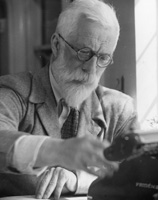 Punnett retired in 1940, but it was three years before Ronald Aylmer Fisher was appointed as his successor. In 1943, as Fisher's daughter has written, "there was no genetics department building; the laboratory consisted of a single room at the west end of the house". Fisher wrote to the Agricultural Research Council in February 1943 that the department "never even possessed a slide rule".
Punnett retired in 1940, but it was three years before Ronald Aylmer Fisher was appointed as his successor. In 1943, as Fisher's daughter has written, "there was no genetics department building; the laboratory consisted of a single room at the west end of the house". Fisher wrote to the Agricultural Research Council in February 1943 that the department "never even possessed a slide rule".
Fisher built the research side of the department between 1943 and his retirement in 1957. A Part II (i.e. undergraduate) class was established in 1951, and there was even an attempt to introduce the teaching of genetics into Part I as early as 1945. Fisher was only able to offer a series of lectures at 5pm on Fridays during Michaelmas Term to first and second year undergraduates who wanted to learn some genetics. Fisher always retired to the Bun Shop, then a pub on the corner of Downing Street and Corn Exchange Street, after lecturing. Those of his students who followed him continued their education in genetics over beer. The Bun Shop was demolished when the Lion Yard shopping centre was built in the mid-1960's. John Thoday continued this tradition as late as 1962. The Part II class remained very small throughout Fisher's period (with 0-3 students), in part because there was no Part I constituency to attract from and in part because genetics then (and indeed until the late sixties) had the reputation of being mathematically tough. Indeed, some Part II students first read mathematics or physics. Nevertheless, many of the senior geneticists of that generation came through the department, as postdoctoral fellows, graduate students, or undergraduates (e.g. Mary Lyon, R.R. Race, Douglas Falconer, Walter Bodmer). During Fisher's time, the main research emphasis of the department was on mouse genetics, in particular on genetic mapping. However, as early as 1949, Fisher appointed Luca Cavalli-Sforza as an Assistant in Research to work on the genetics of E.coli - then a very new field. Unfortunately, Cavalli-Sforza did not stay long, although he made a major discovery here, that of Hfr strains of E.coli.
The first Lectureship was established in 1950 for A.R.G. Owen, and a Demonstratorship was established in 1953 for Margaret E. Wallace. The Assistant in Research post established for Cavalli-Sforza was kept, being occupied by Margaret E. Wallace (1950-1952), J. Brandt (1954-1955), J.H. Bennett (1955-1956) and finally by Michael Ashburner (1966-1968).
While scientifically, Fisher is widely regarded as one of the most influential statisticians of the 20th Century, in wider public discourse, Fisher is much better known for his life-long support for the British eugenics movement, which advocated for "improvement of the human species" through selective breeding. He is also known for his dissenting opinion to the UNESCO statement The Race Question (1950), a moral condemnation of racism, supported by many other scientists, and issued as a response to Nazi crimes. Eugenics today is widely viewed with abhorrence, and it plays no role in current departmental research. Nevertheless, genetics and eugenics were deeply intertwined in the early days of the field, and the legacies of this period pose ongoing challenges for researchers in the department. Two aspects of these challenges are discussed in the articles linked below:
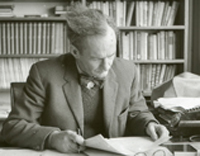 R.A. Fisher retired in 1957, and in 1959 John Thoday was appointed his successor - the word "appointed" is used advisedly, since he was not elected but appointed by the Chancellor under Statute D.XIV.16(b)(i). The reason for this is that the electors could not agree on an appointment. Guido Pontecorvo (then at Glasgow) turned down an offer from Lord Adrian (then Vice-Chancellor). Fisher wanted Francis Crick to succeed him, and he was indeed considered by the electors; however one (C.D. Darlington) was very opposed to this idea. Under these circumstances, Adrian acted within the Statutes, consulted one of the external electors Mather (from Birmingham), and appointed John Thoday, then at Sheffield.
R.A. Fisher retired in 1957, and in 1959 John Thoday was appointed his successor - the word "appointed" is used advisedly, since he was not elected but appointed by the Chancellor under Statute D.XIV.16(b)(i). The reason for this is that the electors could not agree on an appointment. Guido Pontecorvo (then at Glasgow) turned down an offer from Lord Adrian (then Vice-Chancellor). Fisher wanted Francis Crick to succeed him, and he was indeed considered by the electors; however one (C.D. Darlington) was very opposed to this idea. Under these circumstances, Adrian acted within the Statutes, consulted one of the external electors Mather (from Birmingham), and appointed John Thoday, then at Sheffield.
Within two years the Department had moved to the old Veterinary School on Milton Road, an inconvenient site but with the great benefit of extensive grounds for field work and a fine orchard and croquet lawn. Thoday's appointment coincided with the expansion of university education, and he was able to obtain several new posts over the next seven years, and to establish the Department as a strong base both for teaching and research. By 1967, the establishment consisted of four University Lecturers, two University Demonstrators, one Senior Associate in Research and two Assistants in Research. The first external research grants, from the British Empire Cancer Campaign (£27,706) and the Eugenics Society (£878), were awarded in 1961, and the first from the Medical Research Council (£35,097) in 1964.
Professor Thoday also established the tradition that Part II Genetics is a very broadly based training in the subject, expecting his students to study (if not with equal enthusiasm) theoretical population genetics and molecular biology (fields which then had no contact whatsoever). The Part II class remained quite small (between 2 and 10) throughout the Sixties, and the Department undoubtedly suffered from its peripheral location (for a period members even came to the Downing Site in central Cambridge for the weekly Tea Club, in an attempt to reduce the isolation). This was offset by a very collegial atmosphere; most of the Department lunched at the Milton Arms pub, and undergraduates could get their revenge on their elders at the dart board.
The changes to the teaching of Biology in the Sixties had a major impact on the Department. With the new Biology of Cells and Biology of Organisms courses (1963) the Department was, for the first time, involved in the formal teaching of Part I. This was soon strengthened when the Department collaborated with those of Zoology and Botany in the teaching of biology at Part IB. Although the Milton Road site had great advantages, it became increasingly difficult to collaborate and teach in the town centre and, with some relief, the Department moved to its present building (which had been the School of Agriculture) in 1976. This building, which had been erected in 1910 for the old School of Agriculture, is singled out for praise in a 'Nature' article of 1998 [vol. 395, page 849]. In it, the author points out that the grandeur of its Edwardian exterior appears to have stood the test of time better than the more evidently functional modern buildings on the site.
The move to the centre of town coincided with beginning of the explosion of molecular biology, in particular with the introduction of the techniques of molecular genetics to a wide variety of problems. With Medical Research Council funds, the Department built a Category 2 containment laboratory for genetic engineering in 1979, a facility that was used for a time by all other central departments (and prompting the 'Cambridge Evening News' to warn its readers of the risk of meeting bug-eyed monsters in Tennis Court Road). The move also allowed considerable expansion of the Department, in both teaching (to a Part II class of 25 - 30) and research. Indeed, it was only after the move that we had the space and facilities to allow large and well-funded research groups to evolve.
As a consequence of moving to a centrally-located site, we lost the field facilities at Milton Road, and in 1977 a new Genetics Field Station was opened on University land off Huntingdon Road. In 1984, the Wolfson Foundation financed the building of a purpose-built laboratory on that site. This remained until 2010 when University developments in North West Cambridge forced it to be relocated to the Animal Behaviour site in Madingley.
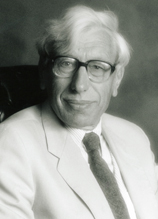 Professor Thoday retired in 1984, and, after a short break, was succeeded by John Fincham, who had previously been Buchanan Professor of Genetics in Edinburgh. (Both Thoday and Fincham had undertaken their PhDs in genetics in the Botany School in Cambridge). By then, the Department had become fully integrated with its sister departments in Biology. As early as 1979 we had initiated the joint teaching of developmental biology at Part II, and in 1989 this was extended to ecology. Changes to Part IB in 1988, the introduction of a joint Molecular and Cell Biology course, further integrated the teaching of genetics with that of the other biological sciences.
Professor Thoday retired in 1984, and, after a short break, was succeeded by John Fincham, who had previously been Buchanan Professor of Genetics in Edinburgh. (Both Thoday and Fincham had undertaken their PhDs in genetics in the Botany School in Cambridge). By then, the Department had become fully integrated with its sister departments in Biology. As early as 1979 we had initiated the joint teaching of developmental biology at Part II, and in 1989 this was extended to ecology. Changes to Part IB in 1988, the introduction of a joint Molecular and Cell Biology course, further integrated the teaching of genetics with that of the other biological sciences.
The Department continued to grow during the period of Fincham. This was not, however, a period of great change except for the establishment of the Wellcome/CRC Institute of Developmental Biology on Tennis Court Road in 1991 (now the Wellcome Trust/Cancer Research UK Gurdon Institute). Two members of the Department (Michael Akam and Martin Evans) moved to this "research hotel" allowing some space for expansion and renovation (particularly with the closure of the mouse house). Martin Evans later moved to Cardiff, receiving, in 2007, a share of the Nobel Prize for Physiology or Medicine for work done in the Department with Robin Lovell-Badge, Allan Bradley and Liz Robertson. Michael Akam left the Gurdon Institute to become head of the Museum of Zoology and, subsequently, Professor of Zoology.
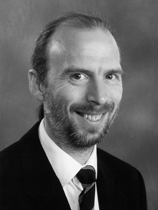 Professor Fincham retired in 1991, and Peter Goodfellow from the Imperial Cancer Research Fund became Head of Department and Balfour Professor of Genetics. Goodfellow brought a substantial research group and initiated a major renovation of the Department, which has allowed the accommodation of a large number of research groups funded entirely on outside funds. This process continued with the Department obtaining the top floor of its building from Biochemistry in May 1999. During the Goodfellow era the Drosophila database FlyBase was established in the Department, with funding from the US National Institute of Health.
Professor Fincham retired in 1991, and Peter Goodfellow from the Imperial Cancer Research Fund became Head of Department and Balfour Professor of Genetics. Goodfellow brought a substantial research group and initiated a major renovation of the Department, which has allowed the accommodation of a large number of research groups funded entirely on outside funds. This process continued with the Department obtaining the top floor of its building from Biochemistry in May 1999. During the Goodfellow era the Drosophila database FlyBase was established in the Department, with funding from the US National Institute of Health.
Peter Goodfellow left at the end of the Summer Term, 1996, and was succeeded by Dr. Don MacDonald, who was acting Head of Department until Summer 1999. Dr. MacDonald was followed by Professor David Glover, who came from the Department of Biochemistry in Dundee. From 2004 to 2009, the Department was headed by Dr. David Summers, who was a Part II student here, graduating in 1977. From 2009 -2013, Dr. Cahir O'Kane undertook the role (he, too, is a past Genetics Part II student, who graduated in 1981).
In October 2013, Professor Anne Ferguson-Smith became Head of Department, coming from the Department of Physiology, Development and Neuroscience; as of 1 October 2015, she also assumed the Arthur Balfour Professorship in Genetics.
Acknowledgements
Original text by Michael Ashburner; Information updated July 2012; further amended July 2013, August 2014, October 2015, October 2021; May 2022
Further information
- The video compiled for the Department Centenary in 2012 : 'From Punnett to Personal Genomics' can be viewed at http://www.cam.ac.uk/research/news/from-punnett-to-personal-genomics-a-century-of-genetics-in-cambridge
- Professor Anthony Edward's paper 'Reginal Crundall Punnett: First Arthur Balfour Professor of Genetics, Cambridge, 1912' appears in Genetics, vol 192, pages 3-13 [Sept 2012]. It is available free online
- Donald Forsdyke's Bateson website at http://post.queensu.ca/~forsdyke/bateson1.htm has lots of information, with photos and links to the full text of some papers
- The Bateson archive is held at the John Innes Institute in Norwich (http://www.jic.ac.uk/corporate/services-and-products/library/index.htm)
- Professor Thoday has a website dedicated to him at http://www.professorjohnthoday.com/
- The University Library exhibition, 'Lines of Thought', which ended in Sept 2016, included a section entitled 'The Evolution of Genetics : From Darwin to DNA' - Read more >> Information also available from the UL
- The preamble to the Inaugural Becky Saunders Lecture of February 2018 included some information about Bateson and Saunders >> See the video here
